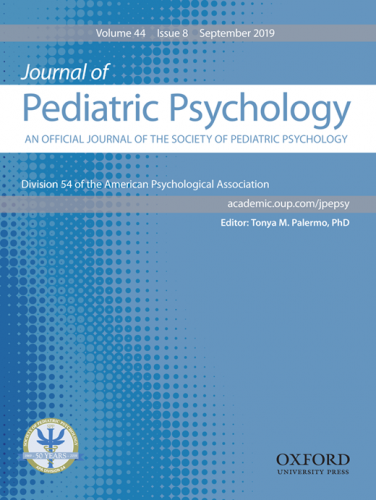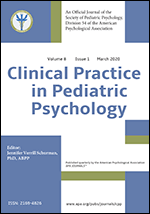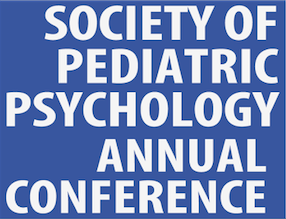Fact Sheet: Autism Spectrum Disorder
Autism spectrum disorder (ASD) is a neurodevelopmental disorder characterized by persistent deficits in social communication and interaction as well as the presence of restricted and repetitive behaviors and interests/activities (e.g., hand flapping, repetitive spinning of objects, or fixated interests on a narrow topic-vacuums for example). Individuals with ASD have a wide range of symptom presentations which can range from mild to severe. Symptom criteria can be met by current presentation or by history. The diagnosis of ASD replaces the previous diagnostic categories of autistic disorder, Asperger’s disorder, pervasive developmental disorder not otherwise specified, and childhood disintegrative disorder. Genetic markers and environmental risk factors for ASD have been identified, but much is still unknown about the causes of ASD. Individuals with a family history of ASD (more specifically, siblings), those with older parents, those born with very low birth weight, and those with certain genetic or chromosomal conditions (e.g., Down syndrome, fragile x syndrome, tuberous sclerosis) have a higher risk of having ASD. Parenting practices and immunizations do not cause ASD.
Prevalence and Course
New estimates suggest that 1 in 59 children have ASD, and that boys are 4 times as likely to be diagnosed as girls. Many factors could explain the increase in the prevalence of ASD over the past twenty years, including earlier identification and better diagnostic procedures. More specifically, improvements in the diagnosis of ASD in girls, minority youth, and individuals with average intellectual functioning have been noted. While ASD is thought to be a lifelong condition, the course of ASD varies substantially, and is related to factors such as language skills, intellectual functioning and participation in early and intensive intervention services.
Health and Psychosocial Consequences
Autism spectrum disorder is often accompanied by medical and emotional/behavioral comorbidities. The most common medical comorbidities include sleep, gastrointestinal problems, feeding concerns, seizures and low muscle tone. As some children with ASD are nonverbal, underlying medical conditions may present as behavioral concerns (e.g., aggression, self-injurious behavior, or withdrawal). Common behavioral comorbidities include inattention, hyperactivity-impulsivity, anxiety, and depression. Medical costs are on average four to six times greater for individuals with ASD. Intensive behavioral interventions can carry an annual cost of $40,000-60,000 per child, with variable insurance coverage of these services. Caregivers of those with ASD are at risk for mental health concerns due to the stress of providing care for youth with complex needs. Thorough evaluation and treatment of medical and behavioral comorbidities is vital for the promotion of overall health in children with ASD. Multidisciplinary care for medical comorbidities for children with ASD is often recommended.
Evidence-based Assessment
The American Academy of Pediatrics recommends that all children receive standardized screening for ASD at 9, 18, and 24- or 30-month primary care visits. Data show that most parents observe developmental differences in their child within the first year of life. Despite consistent parent-reported developmental concerns and the evaluator’s ability to reliably identify ASD in children by 2 years of age, the average age of diagnosis remains approximately 4 years of age. Diagnostic delay causes delays in access to early intervention services which have been shown to improve outcomes for children with ASD. Given the importance of early intervention, a “wait and see” approach is not recommended. Children with failed screens or parent concern should be referred to state-provided early intervention services (e.g., First Steps) and for comprehensive evaluation. Multidisciplinary evaluation teams for ASD may include developmental pediatricians, psychologists, speech-language pathologists, and occupational and physical therapists, depending on the age and functioning of the child and services available in their area. Genetic testing is also often recommended.
Culture, Diversity, Demographic and Developmental Factors
ASD occurs in all racial, ethnic and socioeconomic groups and similar prevalence rates are noted in Asia, Europe, and North America (i.e., average prevalence rate of 1% to 2%). Differential access to diagnostic and treatment services has been noted for African American and Latino youth and the age at diagnosis for these groups is older than for white children. More specifically, African American, Latino, and lower socioeconomic status youth have been found to have less access to comprehensive evaluation and specialty medical services, and have greater misdiagnosis rates.
Evidence-based Interventions
Intervention is grounded in the understanding that ASD is a neurobehavioral, lifelong condition, and thus intervention is targeted to individual needs. Gold standard treatment recommendations for ASD include early intervention services (birth to age 3 years) and intensive and consistent access to therapies such as Applied Behavior Analysis (ABA). Children with ASD may also require speech-language, occupational, and physical therapies based on the child’s specific needs. Referral to mental health specialists such as psychologists, psychiatrists, or developmental behavioral pediatricians may also be needed given the presence of behavioral or mental health concerns. Psychiatric medications do not cure ASD or treat core symptoms (e.g., social communication difficulties; restricted and repetitive behaviors and interests/activities) but can reduce related symptoms such as hyperactivity, anxiety or irritability. A systemic approach to treatment involving parent and sibling support is a critical element of intervention. Finally, appropriate educational accommodations may be required and can be accessed through Individualized Education Programs (IEPs) or Section 504 Plans.
Resource list:
- Centers for Disease Control and Prevention- www.cdc.gov/ncbddd/autism
- Autismspeaks.org
- HealthyChildren.org
- Autism Society of America- www.autism-society.org
- American Academy of Pediatrics Resource List: Autism Spectrum Disorder- https://www.aap.org/en-us/Documents/cocwd_autism_resource_nce.pdf
- American Academy of Child & Adolescent Psychiatry: Autism Resource Center
Author List: Christina Low Kapalu, PhD & Caroline Pittard, M.Ed.
Date of Last Update: October, 2019
Key References
- Bishop-Fitzpatrick, L., & Kind. A. J. H. (2017). A scoping review of health disparities in autism spectrum disorder. Journal of Autism and Developmental Disorders, 47, 3380–3391. doi:10.1007/s10803-017-3251-9
- Campbell, J.M., Hammond, R.K., & Scheil, K.A. (2017). Autism Spectrum Disorder and developmental disabilities. In M.C. Roberts & R.G. Steele (Eds.), Handbook of pediatric psychology (4th ed., pp. 467-481). New York: The Guilford Press.
- Center for Disease Control and Prevention. (2018, May 3). What is autism spectrum disorder? Retrieved from http:// www.cdc.gov/ncbddd/autism/facts.html .
- Center for Disease Control and Prevention. (2018, April 26). Treatment for autism spectrum disorder. Retrieved from http://www.cdc.gov/ncbddd/autism/treatment.html#ei
-
Center for Disease Control and Prevention. (2019, May 2). Data and statistics on autism spectrum disorder. Retrieved from https://www.cdc.gov/ncbddd/autism/data.html



